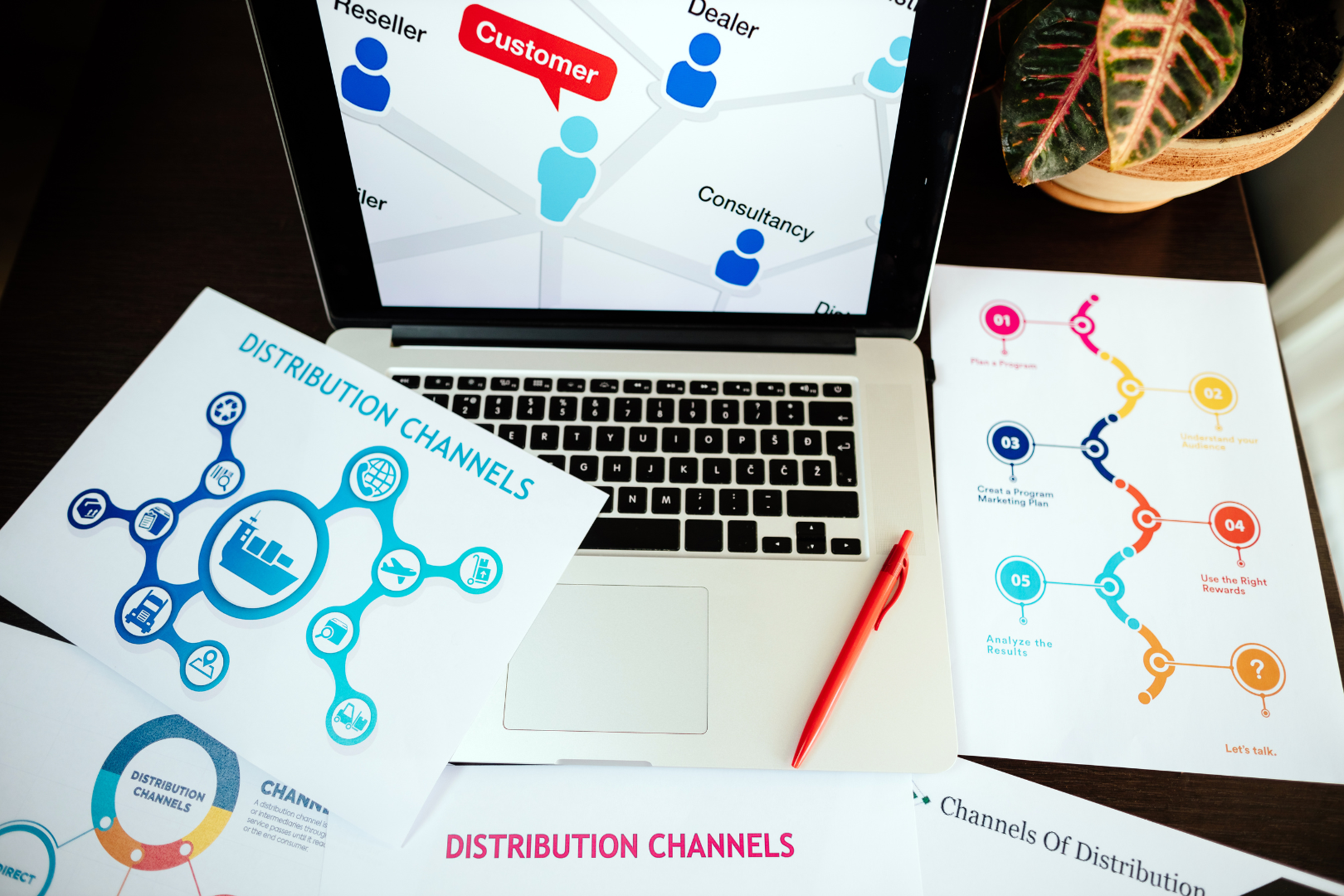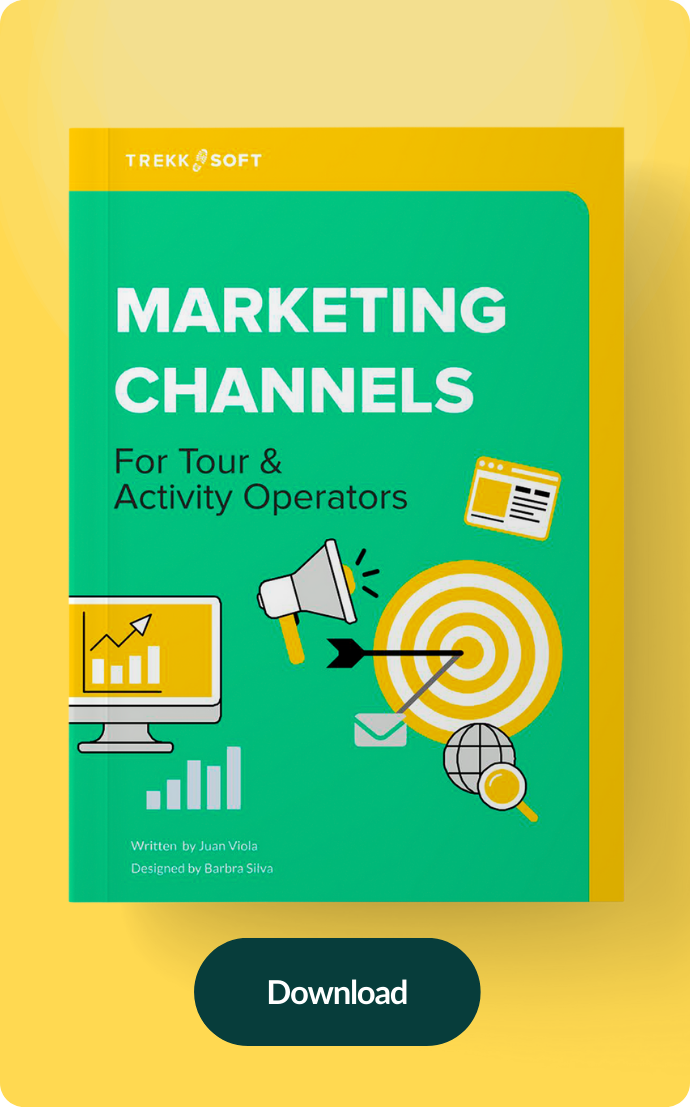Tour companies have increased efforts and spend more time on effective distribution channel strategies, growing sales, and offering a better experience for clients. Not focusing on a distribution channel strategy is like offering your clients the greatest tours and experiences but not telling anyone about it.
There are many distribution channel strategies that you can apply to your own company, but before we continue on how you can apply them to your business, some of the advantages you should be aware of about your distribution channel strategy include maximizing your sales opportunities, building a stronger relationship with your customers, developing your brand voice, increasing brand awareness, and much more.
After our tips, you'll be able to build an effective distribution strategy that delivers your products and services to your audience.
Starting from the beginning, what is the distribution channel strategy?
Overall, a distribution channel strategy means analyzing ways to improve your product and service demand. Think about a distribution channel as the chain of steps necessary for your service to reach the final customer. The main goal is to develop your customer's interactions with your company, leading them to buy your services and even repeat and promote - also known as telling people about their experience.
This distribution can be online, offline, direct, through intermediaries such as agents, and several other ways. The purpose is to find your ideal customer and the ideal location of demand - that is why your strategy will often combine different channels.
To deliver truly great experiences, you have to focus on what customers need to know about your company from what you're offering and eliminate the obstacles in the way.

Types of distribution strategy
There are different types of distribution strategies that you can work with. Here are two that fit the travel and tourism industries:
- Direct: Your customer will book or buy your services directly through your website or physical store in a direct distribution strategy.
- Indirect: With an indirect distribution strategy, you'll count on third parties between your customer and your service. This means that your client purchases through a tour operator, online travel agency (OTA), DMO, etc.
Quantitative Strategy
Besides the types, there is also a quantitative strategy you need to apply to your distribution channel strategy.
- Intensive distribution: In this strategy, you're focused on the goals and capabilities of the distribution method. Also, it involves adding as many channels as possible so that your services reach a broad position in the market. For example, if you want to sell your top tour, you will focus your ad budget, social media, emails, SEO strategies, and more to increase sales and reach the first page on Google.
- Selective distribution: Here you'll sell your services exclusively through selected channels. This strategy works best with a specific ideal customer since you will limit their offer. For example, offering a tour only available through your app.
- Exclusive distribution : This strategy is ideal for generating a high-end brand image. Here you'll offer your service only in a specific channel and in a limited way. For example, selling a uniquely designed tour for an event that your company is attending.
First steps for creating a distribution channel strategy
Offering direct and quality communication to your customers improves how they will interact with your business, leading to happier customers. To do so, a distribution channel strategy can help you to reach that.
To start your strategy, here are some things you should consider:
1. Who is your ideal customer?
Think of how your customers usually buy your services, how they would prefer to buy them, what type of decision does buy your service require from them, and what their main priorities are. For example, your main clients usually prefer private tours instead of group tours, they exchange emails for further information and buy it directly on your website.
Think about the current purchase process your customer goes through and how you can improve and make it easier and better. Also, consider your most profitable customers or those who have recurring purchases, this way, you can focus on the ones who generate most of your revenue.
2. How can your customers find you?
Understanding your client's needs and knowing where they will research and go for more information will make it easier for your company to target the right channels.
Here are a few ways to discover how your customers are finding your business:
- Ask them: encourage employees to ask clients how they found your business during the tours and activities. You can also create an online survey that you can send through email or even share on your social media.
- Use Google Analytics: setting up your website on Google Analytics gives you lots of relevant information, such as where your traffic is coming from. Besides giving you the location (country), their language, which devices they are using to access your website, how much time they are spending on each page, and much more.
- If you're working with email marketing campaigns, keep track of the data provided, such as how people are joining your list.
3. What are your goals?
If you're searching for new bookings, more followers on social media, or promoting a special discount, your strategies must aim for those goals. Remember that you may use more than one strategy to reach more than one type of goal.
4. How much time and cost does your new distribution channel demands
Choosing all the distribution channels simultaneously but not giving the proper attention to developing your strategy will affect your results. Think about the entire process of the strategy.
For example, if you choose to focus on your Instagram account to gain followers and increase brand awareness, who will update the content, select the images, edit the videos and write the posts? Also, will there be someone ready to reply to comments and direct messages and check the reach and interactions? This is an important step, and it's not to overwhelm you but to make sure that you choose the best channels and keep up with them.

Types of channels you should focus on as a tour company
Now that you know the first steps and distribution channels, it's time to decide which channels are best for your company. Choosing the proper distribution channels and selecting the most cost-effective ones will help you determine your strategy.
Thinking about the needs of a tour company, here are some suggestions:
- Website: having your own website has many advantages, such as generating more profitable sales by reducing the amount of booking fees you would have to pay, having a strong online presence, and building a trusting relationship with your customers by giving them all the information they need in one place.
- Things to do in Google: it helps tour operators promote their attractions, and connect with interested consumers. Google aims to make customers' travel research and booking experience very easy with this new tool. Setting up your tours for attractions is easy and with TrekkSoft you can have a direct connection to it. Learn more about it on this page Google Things To Do.
- TripAdvisor: did you know that - according to a Phocuswright's study prepared for TripAdvisor - 53% of bookers would not commit to booking until they read reviews, and 80% would read between 6 -12 reviews before booking?
As the world's largest travel review website, having your services and tours on TripAdvisor has become mandatory. Besides, you can add your website's link and interact with customers through their reviews and ratings. Keep in mind the relevance of third-party distributors when setting your next strategy.
- Google My Business. Google My Business is a platform where you can advertise your business for free in organic search results and Google Maps. Promoting your business to Google is very simple and effective. Companies that verify their information on Google are more likely to be trusted by consumers.
You can also interact directly with customers, answering their questions and replying to their reviews. Share your address, phone number, opening hours, services, events that will happen, and more. Don't forget that you should always keep your profile updated and reply to your customers.
- Online Travel Agents (OTAs). Having a presence on online travel agencies has become almost mandatory for most tour operators. In addition to increasing your reach to travelers globally, OTAs allow you to engage with them when they are still researching and planning their travel. On OTAs, you can give information about your company and services, increase traffic to your website, add photos and videos, and, for many travelers, offer a secure booking platform.
There are many OTAs to work with, such as Viator, GetYourGuide, or Expedia, or even destination-specific OTAs and Vertical-specific OTAs, so if you are curious about it here you can find out more on how to work with them: Distribution tips: Pros and cons of working with OTAs for distribution.
- Social Media. Having a social media presence is still one of the best ways to connect to customers, spread your brand awareness, and engage with clients. Remember that social media is not about being on every channel but choosing the right ones for your selected audience.
Besides, the effectiveness of having an online presence on Facebook, Instagram, or whatever channel you choose helps you to keep track of engagement. This makes it easier to adjust your content and keep evolving your strategy.
You can learn more about different channels, on 18 distribution channels tour and activity operators should consider.
To have a successful distribution channel strategy, you must...
After choosing the proper distribution channels for your company, here are some other things to pay attention to.
Measuring: Analyze your website views, social media reach and interactions, conversion rate, and sales. These insights will help you develop a better distribution channel strategy that is constantly evolving. "You can't improve what you don't measure.", so collect data and learn from it.
Keep an eye on your competitors: Learn what you can improve on your own company to increase your bookings and reach by comparing with others. You can learn more about what is effective within your industry and how to incorporate it into your own business. It can help you set clear goals, find new opportunities, improve the quality of your services, and much more.
Think local and internationally to increase distribution: Working with local agents helps increase your value inside your community, and boost your products and services to those who have already arrived at the destination. While working with international resellers such as OTA, DMOs, or Agents you can promote your company globally, have access to a larger audience and increase your brand awareness.
If you want to learn more about working with agents, check out How much commission should you pay for distribution?.

A distribution channel strategy allows your business to facilitate the booking process, match your ideal customers, and maximize your profits. For some, a new social media strategy helps, for others, creating a website and connecting it to a booking software like TrekkSoft makes their sales grow significantly. But remember that you can choose the strategy that fits your brand and customers, use more than one distribution channel with the same goal, and adapt it according to the seasonality.
With TrekkSoft you can grow your distribution to reach more customers. You can be present where your customers are, whether it's online, on an OTA site, or in-store. Sell via a combination of resellers, OTAs, and business partners to increase your reach. You can sync all your tour schedules and availability across these channels, and automatically update it whenever a new booking is made.
To learn more about increasing your bookings with OTAs and which one fits you better, download our free guide The Large Marketplace, which compares online travel agent platforms.



